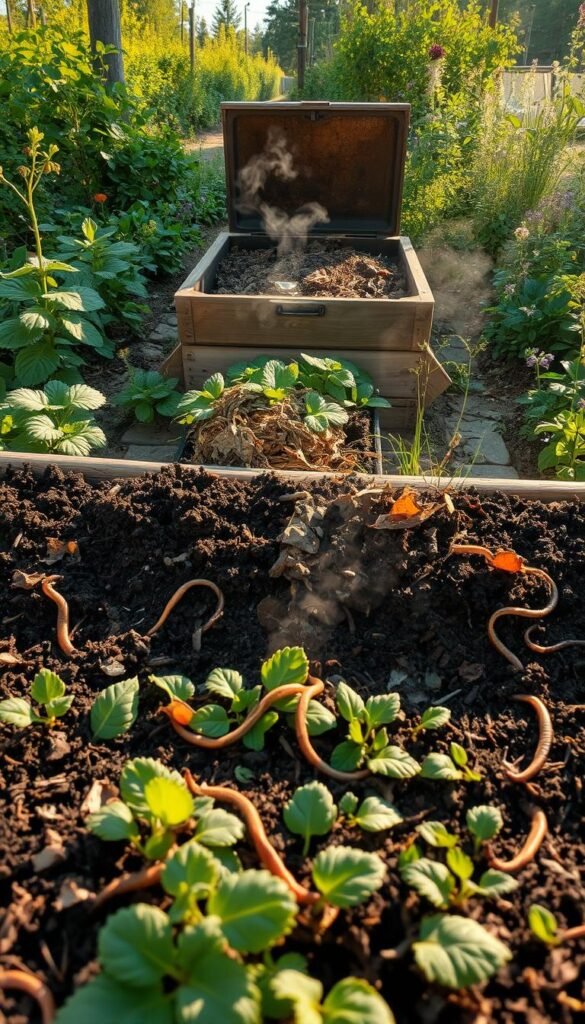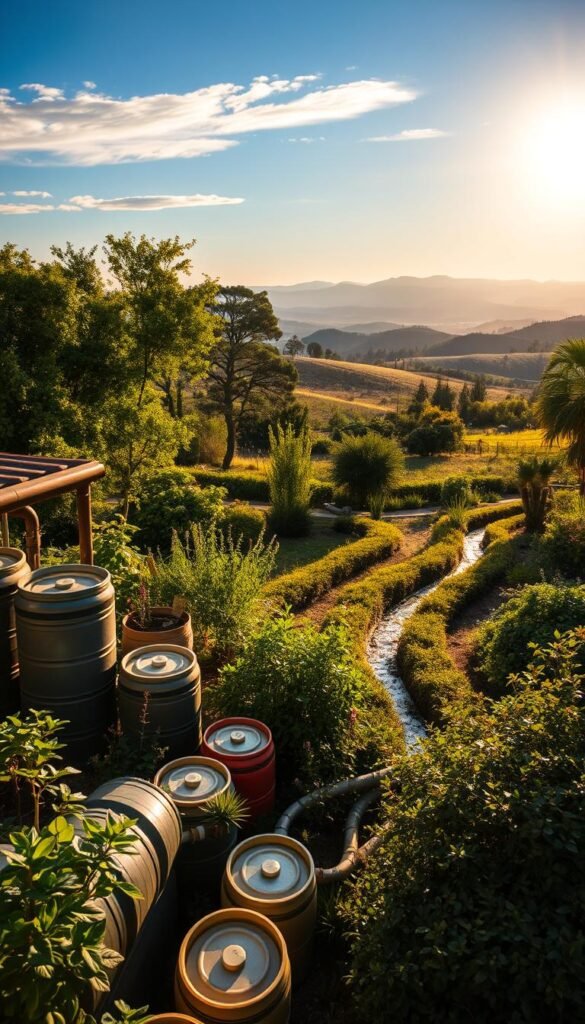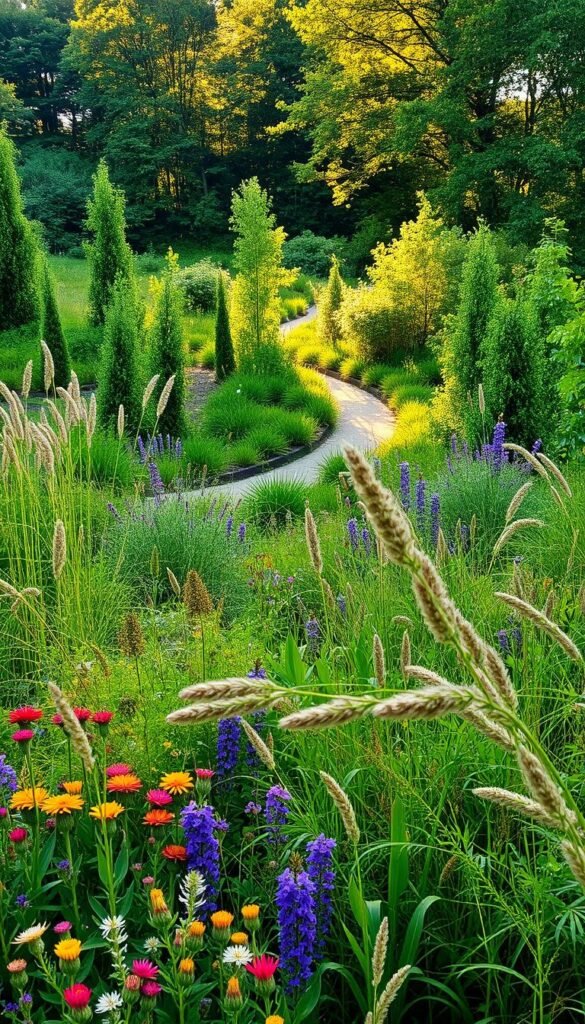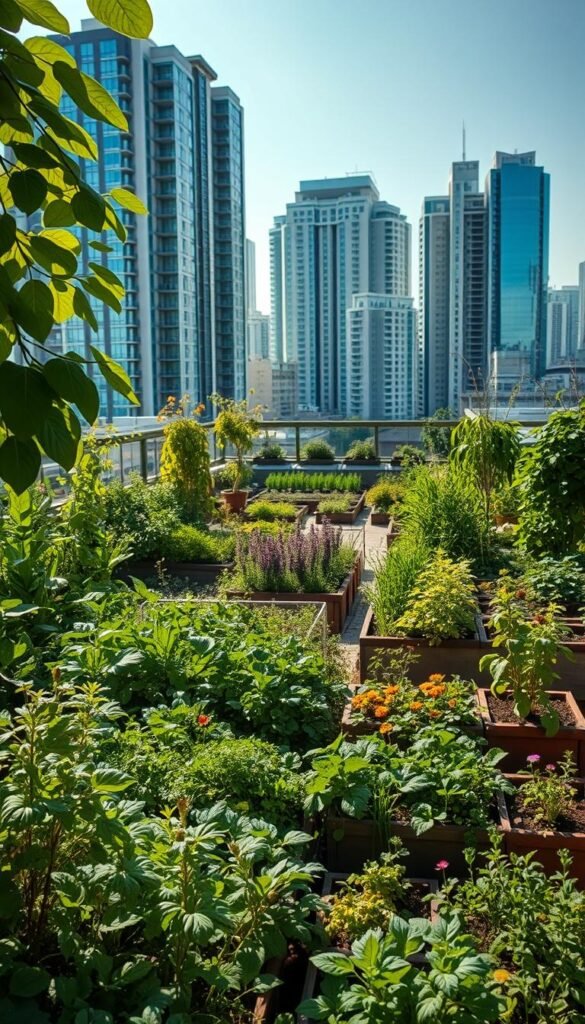Ever thought about creating a garden that thrives with minimal effort while supporting the ecosystem? This approach blends permanent agriculture with thoughtful planning to create spaces that work with nature, not against it. By focusing on patterns like seasonal cycles and soil health, you can build a resilient outdoor area that grows more productive over time.
Observation is the secret ingredient here. Watching how sunlight shifts across your yard or noting where water pools after rain helps shape decisions. For example, keeping a journal to track these details ensures your layout adapts to local conditions. Techniques like no-till beds or companion planting reduce upkeep and mimic natural ecosystems.
Imagine transforming your space into a haven that provides food, beauty, and habitat. This method isn’t about rigid rules—it’s about crafting systems that sustain themselves. Start small: map your site’s unique features, then experiment with layouts that enhance biodiversity. Soon, you’ll see how working smarter—not harder—creates lasting results.
Understanding Permaculture and Its Benefits

What if your backyard could become a self-sustaining ecosystem? Unlike traditional methods that rely on chemicals and frequent upkeep, this approach uses nature’s patterns to create balance. Instead of fighting weeds or pests, you’ll work with natural systems to grow healthier plants and conserve resources.
What Makes It Different?
Conventional gardens often depend on synthetic fertilizers and constant watering. Here, you’ll prioritize organic materials like compost and rainwater. By observing how water flows through your space, you can design features like swales or mulch beds to retain moisture naturally. Companion planting—like pairing tomatoes with basil—reduces pests without sprays.
Key Benefits for Your Garden
First, you’ll attract pollinators like bees and butterflies by choosing native flowers. Second, building rich soil through compost boosts plant health over time. Third, reducing chemicals keeps your harvest safe and supports local wildlife. Imagine picking fresh veggies while birds chirp nearby—it’s possible when your garden works like a mini-ecosystem.
These principles also save effort. Once established, your space needs less watering and weeding. You’ll spend more time enjoying nature’s rhythms than battling them. Plus, every choice—from plant placement to rainwater use—adds up to a greener footprint.
Observation and Planning: The Cornerstones of Sustainable Gardening

Your garden’s daily rhythms hold secrets to its long-term success. By tuning into subtle shifts—like how sunlight dapples leaves or where earthworms cluster—you’ll uncover patterns that guide smarter decisions. This isn’t just about plants; it’s about building a relationship with your space through active listening.
Daily Garden Journaling and Natural Cues
Start with a simple notebook. Jot down what you see each day: budding flowers, insect activity, or soil moisture levels. Over time, these notes reveal trends—like which areas dry fastest or where shade lingers longest. These insights help you adapt planting schedules and resource use.
Set aside 10 minutes daily to walk your space. Notice how wind shapes plant growth or where rainwater collects. This feedback loop turns fleeting observations into actionable data. For example, if slugs favor a certain bed, you might add mulch or adjust watering patterns.
Your experience becomes your best tool. Maybe you’ve noticed tomatoes thrive near herbs—use that next season! Or perhaps autumn leaves pile in one corner, signaling a natural compost spot. Every detail matters when crafting systems that evolve with nature.
This approach isn’t rigid—it’s responsive. By blending journal insights with seasonal cues, you’ll create a living blueprint. The result? A resilient space that grows wiser—and more abundant—with time.
Applying Permaculture Gardening: Design Principles for Sustainable Landscapes

What if every element in your outdoor area could serve multiple purposes? This mindset transforms how you interact with natural resources. Start by mapping existing features—like mature trees or slopes—to build systems that conserve energy and amplify productivity.
Selecting and Utilizing Natural Resources
Focus on locally available materials first. Fallen branches become trellises, while leaves turn into mulch. Prioritize renewable inputs like sunlight and rainwater. For example, position berry bushes where they’ll catch morning light but stay shaded during harsh afternoons.
Consider this comparison of traditional vs. natural resource use:
| Traditional Approach | Natural Method | Impact |
|---|---|---|
| Purchased fertilizer | Compost from kitchen scraps | Enriches soil microbiology |
| Overhead sprinklers | Drip irrigation + rain barrels | Reduces water waste by 40% |
| Plastic mulch | Living groundcover plants | Supports pollinators year-round |
Designing for Resilience and Efficiency
Create zones based on how often you visit areas. Place herbs near your kitchen door for easy access. Further out, plant fruit trees needing less frequent care. This zoning process minimizes daily steps while maximizing yields.
Layer plants vertically to mimic forests. Tall sunflowers provide shade for lettuce, while root vegetables grow beneath. These stacked systems produce more food per square foot while deterring pests naturally.
Remember: your space should adapt as needs change. A chicken coop today might become a compost station tomorrow. By designing flexibility into your landscape design, you create spaces that evolve with your goals.
Building Healthy Soil and Enhancing Fertility

What if your soil could do most of the work for you? Rich, vibrant earth isn’t just dirt—it’s a living network that feeds roots, stores water, and fights pests. Start by testing your soil’s texture and pH. Sandy spots might need compost, while clay areas benefit from organic matter to loosen compaction.
Composting and Organic Amendments
Turn kitchen scraps into black gold. Layer greens (vegetable peels) with browns (dry leaves) in a bin or pile. Turn it weekly to speed decomposition. In 3-6 months, you’ll have nutrient-rich compost that:
- Boosts water retention by 20%
- Feeds earthworms and beneficial fungi
- Releases nutrients slowly to plant roots
Pair compost with mulch to lock in moisture. Straw or wood chips suppress weeds while breaking down over time. For acidic-loving trees like blueberries, mix in pine needles or coffee grounds.
Struggling with heavy clay? Try no-dig methods that layer cardboard and compost directly on grass. This builds fluffy topsoil without tilling—perfect for root crops like carrots.
Perennial herbs and shrubs deepen soil health. Their long roots mine nutrients from sublayers, while fallen leaves recycle organic matter. Over years, your land becomes a self-fertilizing system where every season adds fertility.
Water Management and Landscape Design Techniques

Water is your most valuable resource—learn to work with its natural flow. By catching and storing rainfall, you create systems that nourish plants while reducing runoff. These methods turn challenges like heavy downpours into opportunities for energy efficiency and soil hydration.
Capturing Rainwater Effectively
Start by directing roof runoff into barrels or cisterns. A simple gutter system can catch thousands of gallons annually—enough to water beds during dry spells. Position containers near gardens to minimize hauling. For larger properties, underground tanks store more rain without sacrificing space.
Sloped landscapes benefit from French drains. These gravel-filled trenches guide water away from foundations while filtering it into the soil. Pair them with permeable paving stones to boost groundwater recharge. Every drop you store reduces reliance on municipal supplies.
Creating Swales, Rain Gardens, and Other Features
Swales are shallow ditches that slow and spread water across slopes. Dig them along contour lines to trap rain where it’s needed most. Plant native grasses along the edges to stabilize soil and filter pollutants.
- Rain gardens: Depress areas filled with water-loving plants like iris or sedge
- Bioswales: Deeper channels lined with stones for high-flow zones
- Check dams: Small barriers in drainage paths to prevent erosion
These features work together to mimic natural watersheds. Over time, they’ll build healthier ecosystems while cutting maintenance. For deeper insights, explore a course on integrating these systems into your unique space.
Integrating Native Plants and Biodiversity

Did you know your outdoor space can become a hub for local wildlife? By choosing plants that naturally thrive in your region, you support a balanced ecosystem where every species plays a role. Native flowers, shrubs, and grasses attract pollinators like bees and butterflies while creating habitats for birds and beneficial insects.
Building Partnerships with Local Species
Native plants adapt easily to your area’s climate and soil. They need less water and resist pests better than non-native varieties. For example, milkweed feeds monarch caterpillars, while goldenrod supports over 100 insect species. These relationships form a thriving community that keeps your space lively and productive.
Compare native and non-native options to see their impact:
| Native Plants | Non-Native Plants | Key Benefits |
|---|---|---|
| Black-eyed Susan | Hybrid roses | Requires 60% less water |
| Switchgrass | Fescue turf | Supports 3x more pollinators |
| Oak trees | Bradford pear | Hosts 500+ caterpillar species |
Even weeds have value. Dandelions aerate compacted soil, while clover adds nitrogen. Instead of eradicating them, manage their growth through mulching or strategic planting. This approach aligns with principles permaculture advocates—working with nature’s rhythms rather than against them.
Diverse landscapes mimic natural habitats. Layer tall trees, flowering perennials, and ground covers to create shelter and food sources. Over time, your space becomes a self-sustaining community where every element supports the whole.
Practical Tips for Urban and Suburban Permaculture

Small spaces can still make a big impact when you align your efforts with nature’s logic. Whether you’re working with a balcony or a tiny backyard, smart strategies let you grow food, conserve resources, and create beauty—all while fitting into busy lifestyles.
Adapting to Your Local Climate and Microclimates
Your climate shapes what thrives. Notice how sun hits your home: south-facing walls trap heat, while north sides stay cooler. Use these microclimates to your advantage. Herbs like rosemary love hot pavement edges, while leafy greens flourish in shaded corners.
Track seasonal shifts. In dry regions, group drought-tolerant plants like lavender. Humid areas? Prioritize airflow to prevent mold. A simple rain gauge helps adjust watering care based on actual rainfall. Your place becomes a living lab where every choice responds to local conditions.
Optimizing Zones of Use and Access
Zone your space by how often you visit each area. Keep daily herbs like basil near the kitchen door. Place fruit trees or compost bins farther out—they need less frequent care. Wide, curved paths make maintenance easier while inviting exploration.
Vertical layers maximize yields. Hang strawberry planters on railings or train beans up trellises. For deeper insights, explore this practical guide on space-efficient layouts. Even a windowsill can host microgreens, proving that permaculture gardens adapt to any home.
Troubleshooting Common Challenges in Permaculture Gardens

Every challenge offers a way to deepen your garden’s resilience. Instead of seeing issues as setbacks, view them as clues to refine your approach. Weeds, pests, or uneven growth often reveal hidden patterns in your soil or microclimates.
Managing Weeds as Natural Bioindicators
Did you know dandelions signal compacted soil? Their deep roots break up hard earth, while clover thrives in nitrogen-poor areas. These plants aren’t enemies—they’re messengers pointing to your soil’s needs.
| Weed Type | Soil/Moisture Clues | Solutions |
|---|---|---|
| Chickweed | Excess moisture | Improve drainage with sand or raised beds |
| Plantain | Low fertility | Add compost or green manure |
| Lambsquarters | High alkalinity | Mulch with pine needles or coffee grounds |
Adjust your approach in a way that supports soil life. For example, let nutrient-mining weeds grow until beds stabilize. Then, smother them with cardboard and wood chips to build richer earth.
Balance your space’s needs with nature’s services. If aphids invade, introduce ladybugs instead of sprays. This protects pollinators while tackling pests. Every part of your garden plays a role—even “problems” contribute to the system’s health.
Adapting your care routine becomes part of the solution. Track changes over weeks: Does morning glory fade after adding mulch? These small wins show your adjustments work. Fine-tuning each part of your system ensures long-term health without disrupting beneficial life.
Embracing a Regenerative Future for Your Landscape
Your outdoor space holds power beyond aesthetics—it’s a living classroom for healing the earth. Each step you take, from composting scraps to planting natives, ripples outward. These choices reshape your yard into a dynamic ecosystem that feeds pollinators, cleans air, and cools urban heat islands.
Start by viewing your space as part of a larger network. A rain barrel here or a wildflower patch there adds up. When neighbors mimic these steps, entire communities become wildlife corridors. This collective shift mirrors the holistic design philosophy that balances human needs with nature’s wisdom.
Simple daily habits make regeneration tangible. Leave fallen leaves as mulch. Swap lawn chemicals for compost tea. These steps rebuild soil life while cutting waste. Over time, your land becomes a sanctuary where every creature—from microbes to monarchs—thrives.
Imagine your space joining countless others in a global tapestry of renewal. Each native plant you grow or rainwater system you install strengthens this movement. Together, these permaculture principles forge a healthier world—one backyard at a time.
Your journey matters. By nurturing your patch of earth, you’re crafting a legacy of abundance. Let your landscape whisper hope: a thriving world isn’t just possible—it’s growing right outside your door.






